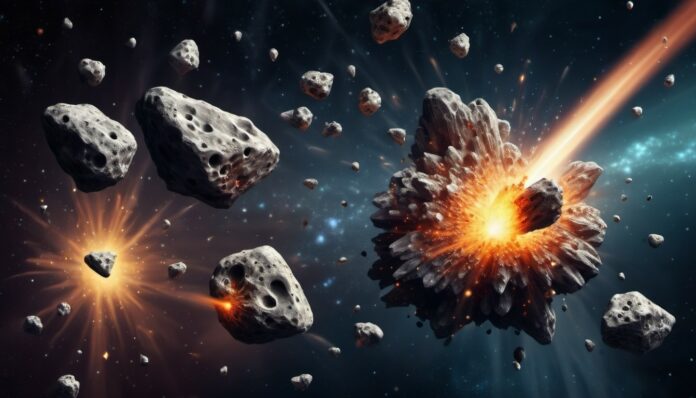The Oort Cloud is a fascinating and mysterious region at the outermost edge of our solar system, filled with icy objects and the potential source of many comets. It is believed to be the source of long-period comets, which are comets that take more than 200 years to complete an orbit around the Sun.
Key Points about the Oort Cloud:
- Location and Size:
- The Oort Cloud is located far beyond the orbit of Pluto and the Kuiper Belt, extending from about 2,000 to 100,000 astronomical units (AU) from the Sun. One AU is the average distance between the Earth and the Sun, roughly 93 million miles (150 million kilometers).
- Composition:
- The objects in the Oort Cloud are composed mainly of water ice, ammonia, and methane. These are remnants from the early solar system that never coalesced into planets or other large bodies.
- Formation:
- It is thought that the Oort Cloud formed from leftover material after the formation of the solar system. This material was scattered by the gravitational influence of the giant planets, such as Jupiter and Saturn, into distant orbits where they now reside.
- Comets:
- When a comet from the Oort Cloud is perturbed by a passing star or the gravitational pull of the Milky Way, it can be sent into the inner solar system. As it approaches the Sun, the heat causes its icy surface to vaporize, creating the glowing coma and tail that we see from Earth.
- Detection:
- The Oort Cloud has not been directly observed because it is too distant and the objects within it are too small and faint. Its existence is inferred from the behavior and origins of comets.
Interesting Facts about the Oort Cloud
- Immense Distance:
- The Oort Cloud is incredibly far from the Sun, extending up to 100,000 astronomical units (AU) away. To put that into perspective, Pluto orbits the Sun at an average distance of about 39 AU.
- Birthplace of Long-Period Comets:
- Many of the comets with long orbital periods that we observe, such as Comet Hale-Bopp, are believed to originate from the Oort Cloud. These comets can take thousands of years to complete one orbit around the Sun.
- Two Parts:
- The Oort Cloud is divided into two regions: the inner Oort Cloud (or Hills Cloud) and the outer Oort Cloud. The inner part is denser and closer to the Sun, while the outer part extends much farther out.
- Primordial Remnants:
- The objects in the Oort Cloud are considered to be remnants from the early solar system, preserved in a distant and cold environment. They provide a unique window into the conditions and materials that existed during the solar system’s formation.
- Gravitational Influences:
- The orbits of Oort Cloud objects are influenced not only by the Sun but also by nearby stars and the tidal forces of the Milky Way galaxy. These gravitational interactions can send comets hurtling toward the inner solar system.
- Spherical Shape:
- Unlike the flat, disk-like structure of the Kuiper Belt, the Oort Cloud is thought to be spherical in shape. This means it surrounds the solar system in all directions.
- Theoretical Evidence:
- Although no objects in the Oort Cloud have been directly observed due to their great distance and small size, their existence is supported by the patterns and origins of long-period comets.
- Potential Source of Water:
- Some scientists speculate that comets from the Oort Cloud may have delivered water to the early Earth, playing a crucial role in the development of our planet’s oceans and possibly even life.
- Millions of Objects:
- It’s estimated that the Oort Cloud contains billions, or even trillions, of icy bodies. These range in size from small dust particles to objects possibly larger than mountains.
- Solar System’s Boundary:
- The Oort Cloud is often considered the outermost boundary of our solar system. Beyond it lies interstellar space, the region between stars in our galaxy.
